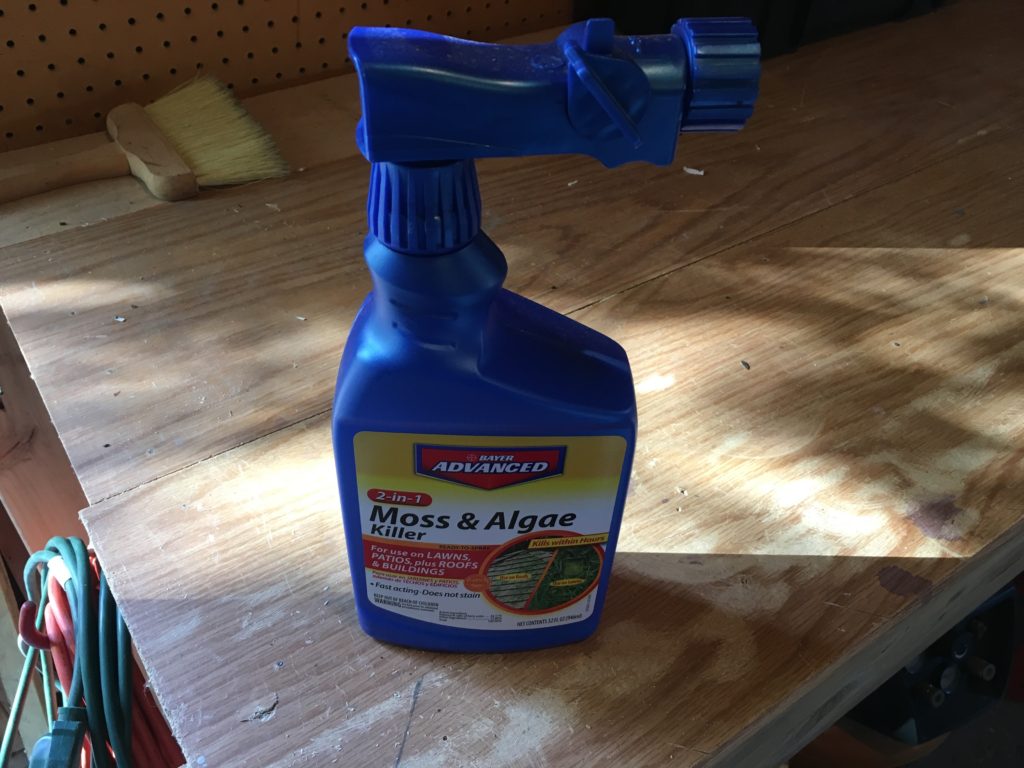On the back side of our house, where the roof shingles only get partial sun and at night only, we had some stuff starting to grow. I’d call it moss, but learned after reading an article or two online that it was more likely a type of algae. I picked up the product below at Home Depot.

The ease of application if the reason I went this route. Some chemicals require using your own pump spray bottle, which I didn’t want to do, because it would mean climbing on the roof to apply. With this bottle, all I had to do was stand on a ladder on our deck, attach the product to a hose, and spray away.

The photo above was taken a couple of weeks after spraying the chemical. It appears the green algae had mostly turned yellow. I did this project in late October, and took the last picture in early November, so I am eager to see if the chemical keeps the stuff from growing back in the spring.





